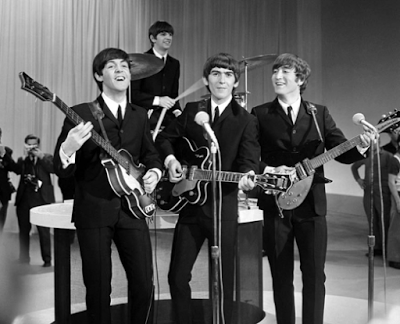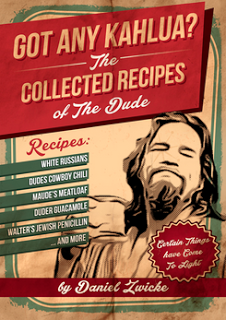The BEATLES
.
The BEATLES
LAST LIVE PERFORMANCE TOGETHER EVER
On The ROOFTOP of ABBEY ROAD STUDIOS
"DON'T LET ME DOWN"
.
This historical performance on the Rooftop of Abbey Road Studios at 3 Sayville Road in London was the Beatles last ever last performance together as a group, The Fab Four as they were known by a nickname. This impromptu concert was held on January 30, 1969 and included the Beatles ; John Lennon, Paul McCartney, Ringo Starr, and George Harrison, along with Billy Preston (known as The 5th Beatle) on keyboards. The concert lasted 42 minutes.
Although the concert was unannounced, the Beatles had planned on performing live during their Get Back recording sessions. The Beatles were wondering where they could perform live, thinking of performing at The Palladium or Sahara but would have had to lug all their equipment over there, "so we decided, why not go up on the roof?" said George Harrison.
This historical concert was recorded on Two 8-Track Recorders by producer Alan Parsons and was filmed by Michael Hogg with mutilple angles including audience ractions.
This concert marked the end of an era for many Beatles fans. The group recorded one more album Abbey Road, but by September 1969 the Beatles had unofficially disbanded.
SONGS PLAYED
GET BACK
DON'T LET ME DOWN
I'VE GOT A FEELING
DANNY BOY
DIG A PONY
GOD SAVE THE QUEEN
.
The BEATLES LAST CONCERT
ROOFTOP of ABBEY ROAD STUDIOS
3 SAYVILLE ROAD
LONDON, ENGLAND
January 30, 1969
CHECK OUT THE BOYS OUTFITS !!!
.
John Paul George and Ringo
THE BEATLES
.
Written by Lennon as an anguished love song to Yoko Ono, it was interpreted by Paul McCartney as a "genuine plea", with Lennon saying to Ono, "I'm really stepping out of line on this one. I'm really just letting my vulnerability be seen, so you must not let me down."The song is in the key of E major and is in 4/4 time during the verse, chorus and bridge, but changes to 5/4 in the pick-up to the verse. It grew (like "Sun King") from the F♯m7- E changes from Fleetwood Mac's "Albatross" ("like she does" [F♯m7] "yes she does" [A, Am] "yes she does" [E]) with McCartney arranging instrumental and vocal parts and Harrison adding a descending two-part lead guitar accompaniment to the verse and a countermelody in the bridge. Alan W. Pollack states that "the counterpoint melody played in octaves during the Alternate Verse by the bass and lead guitars is one of the more novel, unusual instrumental touches you'll find anywhere in the Beatles catalogue.
GET BACK
DON'T LET ME DOWN (Side B)
BRITISH SINGLE
Released April 11 , 1969
Lennon - McCartney
The BEATLES with BILLY PRESTON
RECORDING and RELEASE of "DON'T LET ME DOWN"
Multiple versions of "Don't Let Me Down" were recorded by the Beatles during the tumultuous Get Back (Let It Be) recording sessions. The version recorded on 28 January 1969 was released as a B-side to the single "Get Back", recorded the same day. "Get Back" reached number one and "Don't Let Me Down" reached number 35 on the US Billboard Hot 100.They performed "Don't Let Me Down" twice during their Rooftop Concert of 30 January 1969, one of which was included in the Let It Be (1970) film, directed by Michael Lindsay-Hogg. When the "Get Back" project was revisited, Phil Spector dropped "Don't Let Me Down" from the LET IT BE (1970) album.
The B-side version of the song was included on the Beatles' compilations Hey Jude, 1967-1970 and Past Masters Volume 2 and Mono Masters. The same recording also appears on the soundtrack to the 1988 documentary, Imagine: John Lennon. In November 2003, an edit of the two rooftop versions was included on Let It Be... Naked.
RECEPTION
Richie Unterberger of AllMusic called it "one of the BEATLES ' most powerful love songs", Stephen Thomas Erlewine of AllMusic described the song as "heart-wrenching soul" and Roy Carr and Tony Tyler called it "a superb sobber from misery-expert J. W. O. Lennon, MBE. And still one of the most highly underrated Beatle underbellies." Author Ian MacDonald praised "Don't Let Me Down" and declared that "this track vies with Come Together for consideration as the best of Lennon's late-style Beatles records".
.
.
GOT ANY KAHLUA ?
aka
The BIG LEBOWSKI COOKBOOK
ABIDE in IT !!!
.
It was 45 degrees in London that raw January afternoon, and that doesn't account for the icy wind whipping over the West End buildings. Impending fog had ruled out an expensive helicopter aerial shot, and the threat of rain was very real. These conditions were not ideal to making rock and roll. " My hands are too cold to play the chords," Lennon muttered between songs, and Apple Corps exec Ken Mansfield held a constant stream of lit cigarettes so George Harrison could warm his fingertips. To ward off the winter chill, Lennon borrowed Yoko Ono's fur coat (as he did on occasion). Ringo Starr also donned his wife Maureen's red raincoat.
The cold gusts also proved to be a problem for the delicate studio microphones recording the drums and guitar amplifiers. In need of a quick shield to minimize wind noise, tape engineer (and future Pink Floyd cohort) Alan Parsons was dispatched that morning to buy women's pantyhose. "I walked into this department store and said, 'I need three pairs of pantyhose. It doesn't matter what size.'" he recalled in Guitar Player. "They thought I was either a bank robber or a cross-dresser."
Famously cited as the Beatles' last concert, the rooftop gig was also their first live performance in more than two years. While they had played "All You Need Is Love" and "Hey Jude" before a studio audience on television during that time, those numbers were heavily bolstered by a backing track. The roof was their first truly live show since their final tour ended on August 29th, 1966, at San Francisco's Candlestick Park. They also made a small break from tradition by varying their classic stage placements. Lennon took the middle spot with Harrison to his left.
The BEATLES Last Live Performance Together
Rooftop of APPLE STUDIOS
LONDON
The BEATLES rooftop concert was the climax of a project originally titled Get Back. It was conceived as exactly that, a return to their rock roots in a desperate effort to restore unity when business and personal chaos threatened to destroy the band. A documentary crew filmed the Beatles rehearsing and recording new material for an "honest" album, free from the studio wizardry that had dominated their recent work. The experience pushed the group to the point of disintegration, but they needed an end to the film.
So 47 years ago — on January 30th, 1969 — the band climbed five stories to the top of their Apple Corps headquarters and played their last concert together. The album and film were ultimately released in May 1970 as Let It Be, their swan song. Here are 15 little-known facts about the Beatles' final bow on the world stage.
The Beatles had many ideas about where to perform the climactic concert for their new film — too many ideas. London venues like the Palladium and the Roundhouse were some of the more levelheaded propositions, but most were pretty far-out. The Sahara desert was floated as a potential location, as were the Giza pyramids, and even the QE2 ocean liner. A 2,000-year-old Roman amphitheater in Tunisia was seriously considered, and location scouts were sent to investigate. "The Beatles were to start playing as the sun came up," explained director Michael Lindsay-Hogg, "and you'd see crowds flocking towards them through the day."
But nothing was ever agreed upon. As enthusiasm for the project waned, the band opted to do something a little simpler and closer to home. Guest keyboard player Billy Preston recalls that it was John Lennon who had the idea to stage the concert on the roof of Apple headquarters. Lindsay-Hogg says it was his idea. Others attribute it to Ringo Starr. The concept sounds inspired, but in retrospect it speaks less to creativity and more to laziness.
Preparations were made, with scaffolding planks laid to support the weight of the gear. A few minutes before the concert was due to start, the band huddled in a small vestibule at the top of the stairs. They had cold feet. "George didn't want to do it, and Ringo started saying he didn't really see the point," says Lindsay-Hogg. "Then John said, 'Oh, fuck it — let's do it."
Lennon and Starr wore their ladies' coats.
It was 45 degrees in London that raw January afternoon, and that doesn't account for the icy wind whipping over the West End buildings. Impending fog had ruled out an expensive helicopter aerial shot, and the threat of rain was very real. These conditions were not ideal to making rock and roll. " My hands are too cold to play the chords," Lennon muttered between songs, and Apple Corps exec Ken Mansfield held a constant stream of lit cigarettes so George Harrison could warm his fingertips. To ward off the winter chill, Lennon borrowed Yoko Ono's fur coat (as he did on occasion). Ringo Starr also donned his wife Maureen's red raincoat.
The microphones were wrapped in women's pantyhose.
The cold gusts also proved to be a problem for the delicate studio microphones recording the drums and guitar amplifiers. In need of a quick shield to minimize wind noise, tape engineer (and future Pink Floyd cohort) Alan Parsons was dispatched that morning to buy women's pantyhose. "I walked into this department store and said, 'I need three pairs of pantyhose. It doesn't matter what size.'" he recalled in Guitar Player. "They thought I was either a bank robber or a cross-dresser."
It was their first live performance in over two years.
Famously cited as the Beatles' last concert, the rooftop gig was also their first live performance in more than two years. While they had played "All You Need Is Love" and "Hey Jude" before a studio audience on television during that time, those numbers were heavily bolstered by a backing track. The roof was their first truly live show since their final tour ended on August 29th, 1966, at San Francisco's Candlestick Park. They also made a small break from tradition by varying their classic stage placements. Lennon took the middle spot with Harrison to his left.
George Harrison's guitar was the first of its kind.
The Telecaster that Harrison played throughout the rooftop concert was custom made for him by master builders Roger Rossmeisl and Philip Kubicki as a gift from Fender. The company was launching a new line of all-rosewood guitars, and presenting the prototype to a Beatle was good publicity. After many hours of labor, the guitar was flown to England in its own seat and hand-delivered to Apple headquarters. The builders weren't sure what became of the guitar for over a year, until they bought tickets to see the Let It Be film and saw their handiwork on the big screen. "I was so thrilled I almost jumped out of my seat," remembers Kubicki.
.
The BADASS COOKBOOK
SECRET RECIPES
.
.
.
.
.
.
.








No comments:
Post a Comment